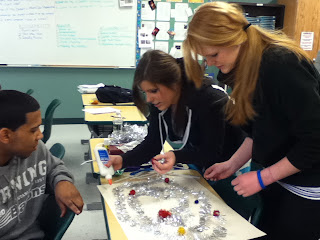In astronomy class, we started talking about the nature of science and how we are often fooled by claims we see on TV or in magazines. Students need to be aware that everything they hear regarding science is not true, and that theories about astronomy could be totally different years from now. After that, we talked about the IMMENSE size of the universe. We compared the size of our planet to other objects in space, and everyone was blown away that we are so tiny! We did a "cosmic survey," where students put pictures of space objects in order by age, size, and distance from earth, based on their previous knowledge. We then watched a video called Greatest Astronomy discoveries, which discussed the 13 greatest discoveries in astronomy. With this and a webquest, we delved into the history of astronomy. Students were assigned two projects based on this:
- Create a "facebook" profile for a famous astronomer
- Write a news article about one of the 13 greatest discoveries as if the discovery was made today
Then, students were challenged to create a model of the universe using a variety of supplies, in less than 30 minutes! This led into a discussion about how their models are accurate, what misconceptions they may have about the universe, and led into our next unit about space exploration. At the end of the semester, students will be challenged to do this again with the knowledge they've gained throughout the semester.
Cody, Connor, Kitana, Emily, and Jessica making their universe models
Jonah, Lyndsie, and Emily N making their universe models
Emily N., Kristina, Emily P. with their toilet paper solar system scale model

Ms. Sosnoski testing different chemicals in a flame while students observe with spectroscopes




